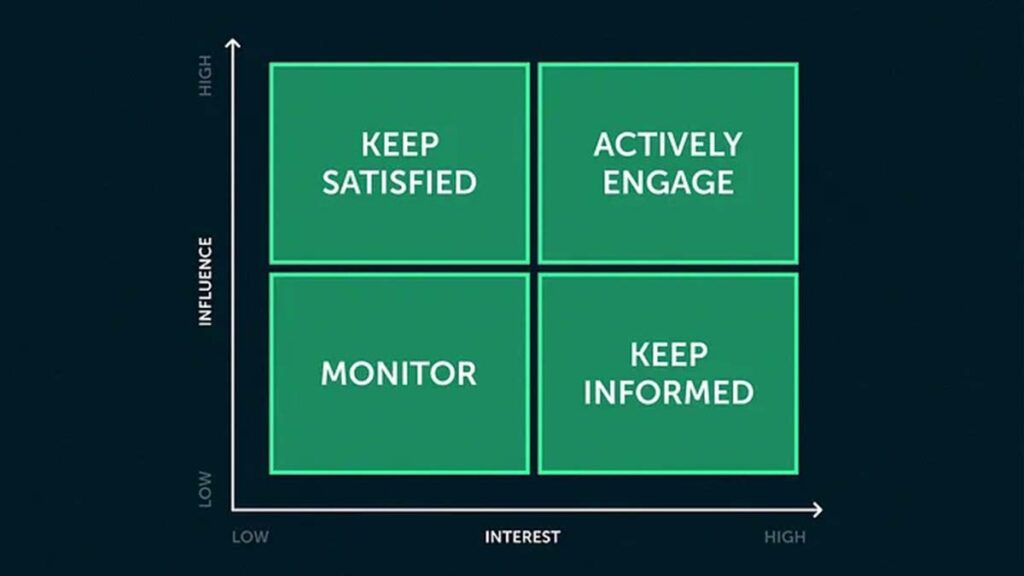Today we are talking about a very practical and visual tool for these key players in the competitive environment. Specifically, it is the strategic stakeholder management matrix.
Stakeholder is a concept we use to refer to those actors that interact with the company’s environment. In other words, they are all the people, organizations and companies that have an interest in the company.
Examples of stakeholders would be employees, customers, suppliers of goods and services, capital providers, the community, society or NGOs, among others.
These groups represent the stakeholder environment and are key to the marketing strategy. In fact, they directly and indirectly affect the company’s environment. They should therefore be considered as a fundamental element in strategic planning.

Matriz de gestión estratégica de stakeholders como herramienta práctica y visual
This type of 4-quadrant matrix is always very operational and helps us to manage information in a simple way. In this way, we can quickly monitor and obtain a global and/or particular vision in a fast way.
The strategic stakeholder management matrix allows us to understand the hierarchies, which in turn helps us in decision making.
The 4 quadrants are formed in this way, based on a horizontal axis (level of interest) and a vertical axis (level of influence):
- High influence / high interest: here we can place those stakeholders who are more decisive, with whom everything must flow and with whom we must actively participate.
- High influence / low interest: these are the stakeholders who must be kept well informed, as they can make changes that affect us at any time.
- Low influence / high interest: these are the stakeholders we should keep informed, as they are always an option that can help us if we need it.
- Low influence / low interest: in general, we do not need to keep them informed, but they can be useful in some specific aspects, so it is important to detect them.
Photo credit: Pinterest